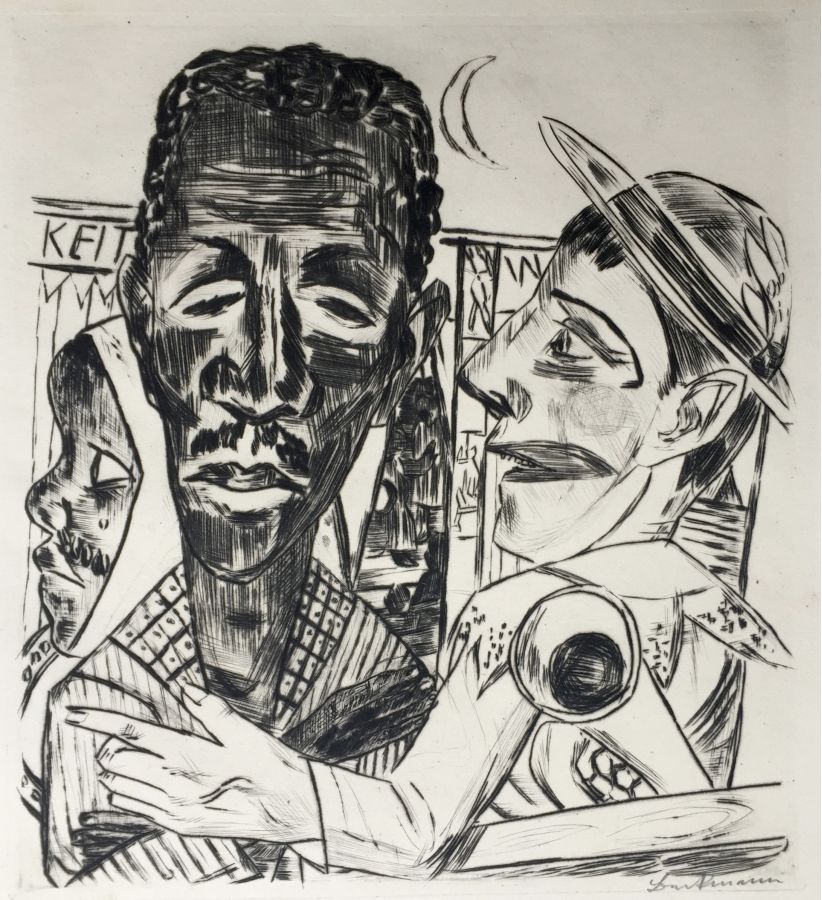MAX BECKMANN (1884 – 1950)
DER NEGER (THE NEGRO) 1921 (Glaser 171. Gallwitz 168. Hofmaier 196 II B b. Rifkind 138 6.)
Drypoint, Signed in pencil from Jahrmarkt (The Annual Fair) . One from a portfolio of ten drypoints. Very good impression On japan paper plate: 11 7/16 x 10 1/4" Sheet, full margins with deckle edge, 20 3/4 x 15". Blind stamp of publisher: Marées-Gesellschaft, R. Piper & Co., Munich. Printer: Franz Hanfstaengl, Munich, 1922.
This impression one of 75 on japan paper, plus 125 on wove paper - Total Portfolio edition: 200, plus 6 known state proofs and 4 known trial proofs. There is a posthumous edition, 1966: 110 (including 30 on "Japan" paper, and 80 on wove paper).
The "Jahrmarkt" was a series of 10 drypoints illustrating various characters in a metaphoric annual German street fair.. It also included Beckman himself as a few of the characters.
The Museum of Modern Art described the portfolio below:
Heather Hess, German Expressionist Digital Archive Project, German Expressionism: Works from the Collection. 2011.
Max Beckmann imagines the world as a carnival in this portfolio. On the title page, he casts himself as a barker for a traveling band of outsiders, the Circus Beckmann. Shown ringing a bell, and pointing to the edge of the page, he urges viewers to behold the spectacles unfolding within. In Beckmann's theater of life everyone plays many roles: actor, observer, director. The ten rich, velvety drypoints touch upon the major themes he explored throughout his long and productive career: existential crisis, the alienation of modern life, and the insurmountable conflict between the sexes. Beckmann's Expressionist manipulation of space and his pushing together of figures increase the emotional distance between the individuals, who appear to exist only in worlds unto themselves. Actors corralled together backstage wait patiently, not realizing that their true performance—life itself—has already begun. Beckmann conveys female sexuality as a dangerous lure in scenes set in the shooting gallery, on stage, and behind the scenes. In one print, he depicts himself and his wife, Minna, balancing on a tightrope—an allusion to Friedrich Nietzsche's Thus Spoke Zarathustra, in which the philosopher describes man as a "rope" hung over an abyss between base animal and heroic Übermensch.



